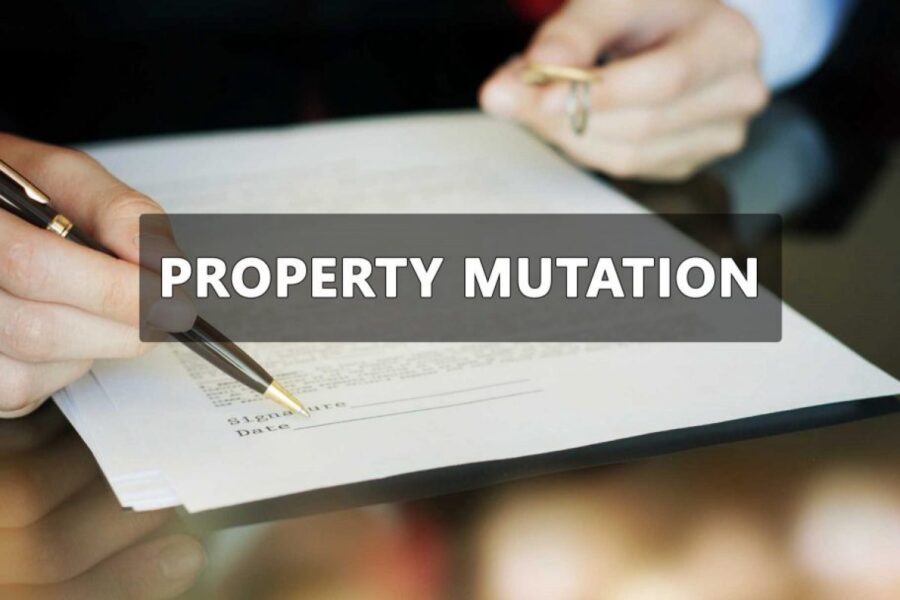Land mutation means the process of completing paperwork including title deeds under a local municipal office when a property gets sold or gets transferred to another name. The property records are then mutated, and the new owner’s name is registered by the Land Revenue Department. According to the records of the department, the new owner will start paying property tax. It is also important to note that the procedural change and all added charges during the mutation process differ from state to state in India.
Who Can Get Property Mutation Done?
Those who purchase land or apartments or inherit it in the form of a will or gift will have to get mutation done.
When Mutation of property can be done?
While the process of mutation is significant and necessitates the participation of both the buyer and the seller, it is regarded as a mere formality and can be finished at any point following the completion of the transaction. In a technical sense, a property that underwent a land mutation in Mumbai is not the same as a property that underwent one in Delhi. This is because these states’ governing bodies differ from one another.
Steps for Document Submission
A mutation certificate of land is considered a valid document for property transactions. In a situation where the government acquires agricultural assets, the settlement funds released by them will come under the mutation document holder. The process can be submitted to the local area revenue officer.
You will need to submit a few documents during the mutation process. Review the documents needed below to ensure that you understand all potential impacts.
*a full copy of the sale deed completion
*mutation application form attached with the necessary stamp fee
*Stamp paper of required value including affidavit and indemnity bond
*Up-to-date paid receipts of property taxes.
In the case of inheritance or will a few other documents will be required for the mutation process:
*property mutation application form attached with stamp paper and the required fee
*Death certificate of the deceased owner
*Indemnity and affidavit stamp paper of required value
*Up-to-date tax payment receipts
*Payment receipts from the sub-registrar office
Approximate Charges-
here is a nominal fee for the property mutation process. The local civic body will also charge a nominal fee of Rs.25-Rs.100. This will vary from state to state. The nominal charge is a one-time payment only.
What is the Format of a Mutation Certificate?
Mutation of land records is the process of changing the title ownership from one individual to another. After the mutation process is complete, a mutation certificate is issued. Here is the format of a mutation certificate:
*Name of the owner
*Property details
*The date of mutation
*Mutation order number
*Revenue department’s seal and signature
mutation certificate is an important legal document that confirms the change in ownership of the property. It is necessary to keep it safe for future reference.
Time Limit or No Time Limit-
While landowners must complete the mutation process at once, apartment owners can get the mutation done at their convenience. But it’ll always be good to have your property mutation case status updated in order in case you plan to sell your property in the future.
Jamabandi – Haryana Land Records
Jamabandi portal contains the official land records of the Revenue Department of Haryana Government. Details like property registration, sanctioned mutations and Jamabandi of any land can be accessed on the Jamabandi portal.
Services on Jamabandi Portal
The services of Jamabandi – Haryana are below:
*Property Registration
*Get Jamabandi Nakal
*View Mutation Order
*View Cadastral Map
*Stamp Duty Details
*Revenue Court case information
What is Jamabandi?
The Revenue Department of Haryana prepares the document of Jamabandi. Jamabandi is the father of all land records. Jamabandi is also called ROR, which stands for ‘Record of Rights’. It is revised every 5 years when a new Jamabandi is prepared by the Patwari and attested by the revenue officer. Two copies of the revised Jamabandi are necessary. One copy consigned to the district record room, and other copy remains with the Patwari. In Haryana state Jamabandi (ROR) contains the following details:
Khewat
Khatoni
Patti
Owner details
Cultivator details
Source of irrigation
Filed numbers or khasranos
Area and type of land
Rent paid by cultivator, rate and amount
Share or measures of right and rule of bach.

